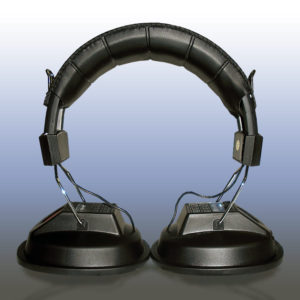Headphone Impedance EXPOSED!
By Front End Audio on Feb 27th 2018

We see it all the time. You did your research and know what model headphone you want to get. Then you go to buy them - at FrontEndAudio.com ;) - and there are different versions with different impedance! What version do you get? What is the difference between the different impedance? OHM MY GOD! What does it all mean?
Well it's pretty simple actually. Now we could go into the technical aspect of things, and many would appreciate that, but does it really help for a straight forward answer?
Per Merriam-Webster
Definition of impedance - something that impedes : hindrance: as
- a: the apparent opposition in an electrical circuit to the flow of an alternating current that is analogous to the actual electrical resistance to a direct current and that is the ratio of effective electromotive force to the effective current
- b: the ratio of the pressure to the volume displacement at a given surface in a sound-transmitting medium
Well that was helpful. Now you know which version of your chosen headphones to get. Right? Well of course not. There is much more to it than that. We'd have to get into a lot of other things to really dive into the technical side of impedance and design. But, there is really only one important thing you have to understand – and that is the output impedance of the device the headphones are to be used with. If you know that, it's as easy as matching the impedance of the headphones as closely as possible to the impedance of the device.
Seriously, that's it. Mobile devices, such as iPods, smart phones, even computer sound cards, etc. typically have lower impedance. So a 32 Ohm pair of Beyerdynamic DT-770s will work best with such devices. Now we get into the other variants. 80 Ohms is suitable for studio use, but also well suited for home use (with stereo equipment, for general listening purposes). 250 Ohms is best suited for studio and live sound use (for engineers and musicians in tracking and mixing applications). You'll find that most headphone outputs on interfaces function in this range. For instance, the output impedance of the Universal Audio Apollo 8 is 300 Ohm. 250 Ohm is pretty darn close to 300 Ohm – so yeah, you got a match there. The Presonus HP4 headphone amp actually functions between 32 and 600 Ohms, so the sky is the limit for you there. Which segues into the long standing tradition of the high end. This is where we get into the audiophile, mastering, and reference grade. All this is generally in the 600 Ohm arena. Now 600 Ohm headphones might seem a little confusing, because if you look at an amp like the SPL Phonitor, you'll notice an output of less than one Ohm. Great, everything is turned upside down now! Well, not really. Due to the higher impedance of this class of headphones, you only need to know that you need a headphone amp. A mobile device won't drive them, and your interface headphone out won't get enough level out of them. While the output of the Phonitor 2 is rated at 0.18 Ohms, their amp is designed to function with headphones rated 32-600 Ohms. As noted in their specs - Max. Output Power (at +30 dBu at 1 kHz) = 2 x 1 W at 600 Ohm impedance.
So while diving deeper can get confusing for many of us, we can simplify things to know what we need. Much like you don't have to know how electricity works to flip on a light switch – you don't have to understand impedance and design to get the right headphones. Again just remember the following:
- Match the headphone impedance as closely as possible to the output impedance of the device you are using them with.
- 32 Ohm is best for mobile
- 80 Ohm is best for home and even studio/musician use.
- 250 Ohms is best for studio and live sound applications
- 600 Ohms is for reference class / audiophile / mastering – And requires a headphone amp.
Now that that is cleared up – go focus on making music. Well be here when you need some new headphones (or some other gear).






 Sign Up for exclusive sales and offers!
Sign Up for exclusive sales and offers!